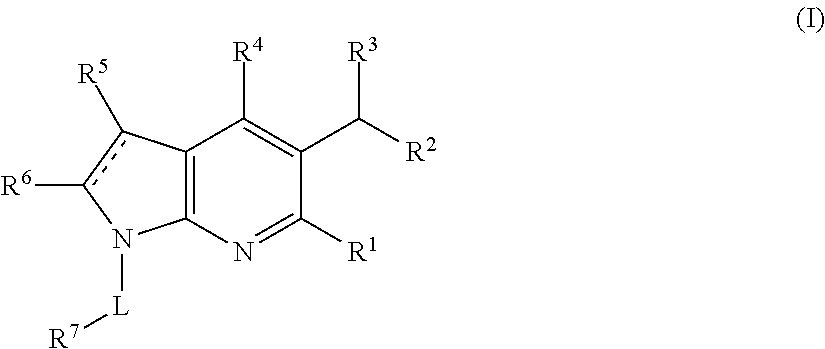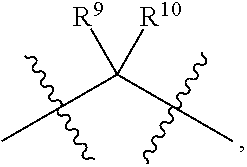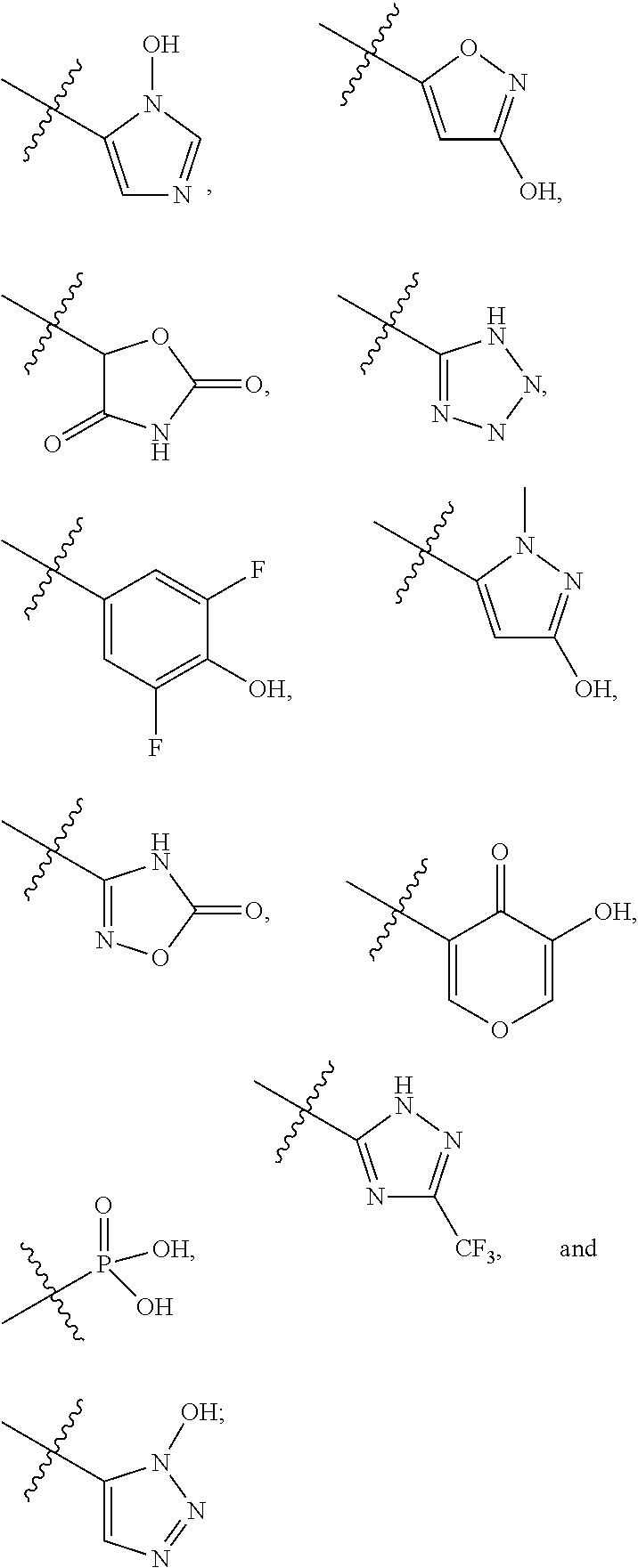Azaindole compounds and methods for treating HIV
a technology of azaindole and compounds, applied in the field of substituted azaindole compounds, pharmaceutical compositions, can solve the problems of complex haart therapy, limited options for this approach, and additional therapies still required
- Summary
- Abstract
- Description
- Claims
- Application Information
AI Technical Summary
Problems solved by technology
Method used
Image
Examples
example 1
2-(tert-butoxy)-2-(1-(4-fluorobenzyl)-6-methyl-4-(p-tolyl)-1H-pyrrolo[2,3-b]pyridin-5-yl)acetic acid
[0523]
Step A
methyl 2-(4-methylbenzylidene)-3-oxobutanoate
[0524]
[0525]A solution of 4-methylbenzaldehyde (0.981 ml, 8.32 mmol), methyl acetoacetate (0.898 ml, 8.32 mmol), piperidine (0.041 ml, 0.416 mmol), and acetic acid (0.024 ml, 0.416 mmol) in benzene (12.5 ml) was refluxed with a Dean Stark apparatus for 1 day. The reaction was concentrated; the residue was dissolved in EtOAc, washed with water, sat. NaHCO3, Brine, dried with Na2SO4, filtered, and concentrated. Purification with column chromatography afforded a 2:3 mixture of E / Z isomers of methyl 2-(4-methylbenzylidene)-3-oxobutanoate (1539.1 mg, 7.05 mmol, 84.7% yield) as yellow oil: E=1H NMR (400 MHz, CHLOROFORM-d) d=7.67 (s, 1 H), 7.29 (d, J=8.2 Hz, 2 H), 7.18 (d, J=8.1 Hz, 2 H), 3.83 (s, 3 H), 2.37 (s, 3 H), 2.36 (s, 3 H) LCMS (m / z) ES+=219 (M+1). Z=1H NMR (400 MHz, CHLOROFORM-d) d=7.55 (s, 1 H), 7.33 (d, J=8.2 Hz, 2 H), 7.20...
example 2
(S)-2-(tert-butoxy)-2-(1-(4-fluorobenzyl)-6-methyl-4-(p-tolyl)-1H-pyrrolo[2,3-b]pyridin-5-yl)acetic acid
[0546]
[0547]The title compound was isolated by purification of racemic Example 1 by preparative HPLC using a (R,R) Whelk-O1 column (250 mm×30 mm I.D.; 5 um) from Regis Technologies (Morton Grove, II, USA) on an Agilent 1100 series (Santa Clara, Calif., USA) preparative unit. The mobile phase was comprised of 95% hexanes containing 0.1% formic acid (v / v) and 5% isopropanol, operating at 42.5 ml / min, with triggered collections at 236 nm; Rt=10.7 min; 1H NMR (400 MHz, CHLOROFORM-d) δ ppm 7.69-7.56 (m, 1 H), 7.43-7.30 (m, 3 H), 7.29-7.25 (m, 2 H), 7.08-6.91 (m, 3 H), 6.24 (d, J=3.6 Hz, 1 H), 5.65-5.38 (m, 3 H), 2.77 (s, 3 H), 2.46 (s, 3 H), 0.94 (s, 9 H); LCMS (m / z) ES+=461 (M+1).
example 3
(S)-2-(tert-butoxy)-2-(4-(4-chlorophenyl)-1-(3,4-difluorobenzyl)-6-methyl-1H-pyrrolo[2,3-b]pyridin-5-yl)acetic acid
[0548]
[0549]The title compound was made in a similar manner as Example 1 except starting with 4-chlorobenzaldehyde and using 3,4-fluorobenzyl bromide in Step 1-8. The enantiomers were separated at Step 1-10 using a Daicel OJH column (250×30 mm i.d., 5 um; ChiralTechnologies, (West Chester, Pa.) under supercritical conditions maintained at 40° C., 120 bar, with methanol modified CO2 (20% MeOH, 80% CO2) the isomer was carried through Steps 1-11 and 1-12 to afford the title compound (11 mg) as a white solid: 1H NMR (400 MHz, CHLOROFORM-d) δ=7.78-7.69 (m, 1 H), 7.53 (d, J=8.8 Hz, 3 H), 7.08 (s, 3 H), 7.05-6.98 (m, 1 H), 6.24-6.16 (m, 1 H), 5.43 (s, 3 H), 2.75 (s, 3 H), 0.99 (s, 9 H); LCMS (m / z) ES+=499 (M+1).
PUM
 Login to View More
Login to View More Abstract
Description
Claims
Application Information
 Login to View More
Login to View More - R&D
- Intellectual Property
- Life Sciences
- Materials
- Tech Scout
- Unparalleled Data Quality
- Higher Quality Content
- 60% Fewer Hallucinations
Browse by: Latest US Patents, China's latest patents, Technical Efficacy Thesaurus, Application Domain, Technology Topic, Popular Technical Reports.
© 2025 PatSnap. All rights reserved.Legal|Privacy policy|Modern Slavery Act Transparency Statement|Sitemap|About US| Contact US: help@patsnap.com



